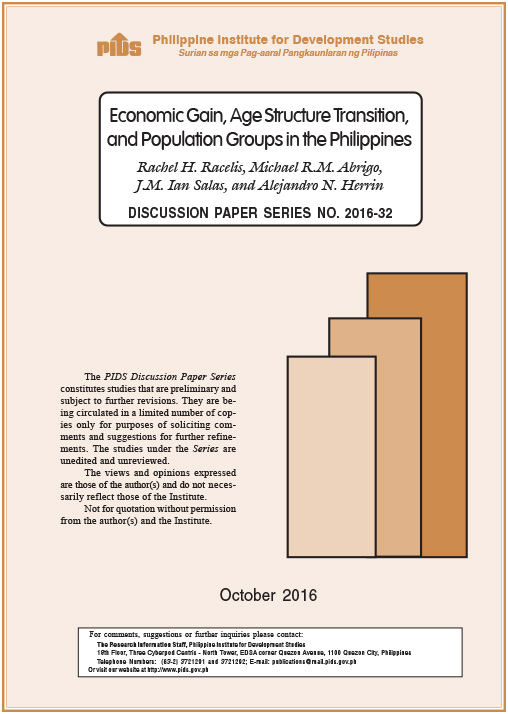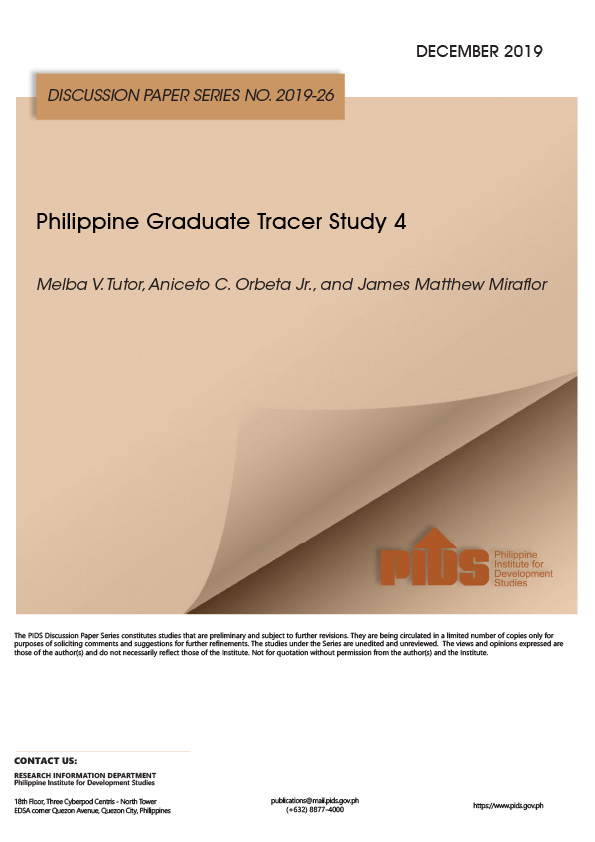A recent Philippine study examined economic gain from age structure transition at the national level by using economic support ratios and National Transfer Accounts estimates for the years 1991, 1999, and 2011. The study showed that the Philippines has steadily been experiencing demographic change (increasing percentage of the population in the working ages) and that there was economic gain from such change, as indicated by increasing support ratios during the indicated period. But in any given year, the support ratio that is observed at the national level is actually an average across diverse groups.
This paper attempts to answer the following questions: In a given year, how do support ratios vary between groups? How do the variations in support ratios between groups compare across different years? Population groups are studied to determine whether those that have higher proportions in the working ages would show higher support ratios--a pattern that was found in the study cited when the Philippines was observed at the national level over time. The population is grouped in this study on two attributes, namely, household income (terciles) and location of residence (urban or rural) for a total of six groups. These six groups are used to observe variations in population age distributions, economic lifecycle patterns, and support ratios in the years 1991, 1999, and 2011, parallel to the years covered in the national level study cited and with each year representing periods with different economic conditions.













